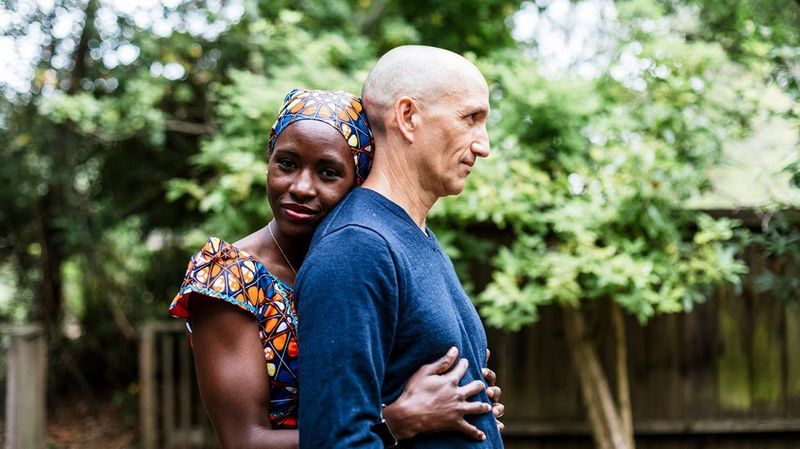Open relationships have become a topic of intrigue and debate. While some view them as a way to expand emotional and relational horizons, others see them as fraught with potential pitfalls.
Experts in psychology, therapy, and relationship coaching offer diverse insights into what makes open relationships succeed or fail.
This article explores 18 expert opinions, shedding light on emotional needs, the importance of boundaries, and the dynamics that play a key role in non-monogamous relationships.
1. Open relationships require more communication—not less
In open relationships, communication takes on an elevated role. Contrary to what some might think, less is not more in this context. Open dialogues about emotions, expectations, and boundaries become paramount.
Communication is not just about speaking; it involves active listening and understanding. As relationship experts point out, assumptions can lead to misunderstandings and conflicts, so clarity is key.
Partners must regularly check in with each other to ensure all parties feel heard and valued. Ultimately, open relationships that thrive are those where communication is prioritized and continuously nurtured, as it forms the backbone of trust and connection between partners.
2. Jealousy doesn’t vanish—it’s just handled differently
Jealousy is a natural emotion that doesn’t simply disappear in open relationships. Instead, it is managed through open discussions and emotional intelligence. Experts highlight that acknowledging jealousy without judgment allows couples to address it constructively.
Techniques such as mindfulness and empathy can aid in transforming jealousy into an opportunity for growth. A relationship coach notes that understanding the root cause of these feelings can lead to deeper intimacy and trust.
By discussing boundaries and reassurances, partners can navigate jealousy together, making it a part of their journey rather than a roadblock. Successful open relationships see jealousy as a chance to strengthen emotional resilience.
3. Boundaries have to be clear and mutual
Clear, mutual boundaries are essential in open relationships, serving as guideposts for behavior and expectations. Experts stress that these boundaries should be set collaboratively and revisited regularly.
Without mutual understanding, boundaries can lead to confusion and conflict. A psychologist emphasizes that boundaries are not about control but about ensuring comfort and respect.
These guidelines act as a safety net, offering reassurance and stability. When boundaries are respected, partners can explore their relationships with greater confidence and security, knowing that their fundamental needs are acknowledged and protected.
4. It works best when it’s not a last-ditch effort
Entering an open relationship as a last-ditch effort to save a failing relationship often spells trouble. Experts caution that this approach can exacerbate existing issues rather than resolve them.
Successful open relationships are typically entered into from a place of strength and mutual desire, rather than desperation. A therapist points out that couples should aim to address core relationship issues before exploring openness.
When both partners approach the idea with enthusiasm and readiness, open relationships have a greater chance of enhancing rather than straining the bond. Therefore, timing and intent are crucial factors in determining success.
5. Emotional honesty matters more than ever
Emotional honesty is a cornerstone of any healthy relationship, but it becomes even more vital in open relationships. Experts emphasize the need for transparency about feelings and desires.
Being honest can prevent misunderstandings and build stronger connections. A relationship coach underscores the importance of discussing both positive and negative emotions openly.
In open relationships, where dynamics can shift, honesty acts as a stabilizer, ensuring that partners remain aligned and supportive. Embracing emotional honesty fosters a deeper sense of trust and understanding, essential for navigating the complexities of non-monogamy.
6. People confuse openness with freedom from responsibility
There’s a common misconception that open relationships offer freedom from responsibilities. However, experts argue that they require a higher level of accountability.
Openness involves recognizing and honoring commitments to all partners involved. A psychologist notes that neglecting responsibilities can lead to emotional harm and instability.
Successful open relationships thrive on a balance of freedom and responsibility, where all parties feel respected and valued. Misunderstanding this balance can result in relationships that are chaotic and unfulfilling, highlighting the need for clarity and intentionality.
7. It can work—but it’s not easier
Open relationships can indeed succeed, but they are not necessarily easier than monogamous ones. Experts emphasize that they require more effort in communication, emotional management, and boundary setting.
The notion that openness simplifies relationships is misleading. A relationship coach explains that the additional dynamics create both opportunities and challenges.
Couples must be prepared to invest time and energy into maintaining harmony. Open relationships can enrich lives but demand a willingness to navigate complexities thoughtfully and with empathy.
8. One-sided openness never ends well
One-sided openness, where only one partner seeks additional relationships, often leads to imbalance and dissatisfaction. Experts warn that this dynamic can create feelings of neglect and insecurity.
Healthy open relationships require mutual agreement and involvement. A therapist advises that partners must communicate openly about their needs and limitations.
When openness is one-sided, resentment can build, undermining trust and connection. Ensuring that both partners are on the same page is crucial for the relationship’s success and longevity.
9. It’s not a fix for a bad relationship
Using open relationships as a solution for an already troubled relationship is often ineffective. Experts stress that they should not be viewed as a remedy for underlying problems.
A psychologist points out that open relationships require stability and trust, which are often absent in struggling partnerships. Addressing core issues first is vital.
Attempting to fix a relationship through openness can introduce new challenges, exacerbating conflicts. Building a strong, healthy foundation is essential before exploring non-monogamous paths.
10. It requires emotional security from both partners
Emotional security is a prerequisite for successful open relationships. Experts highlight the importance of each partner feeling confident and valued.
Insecure dynamics can lead to jealousy and conflict. A relationship coach emphasizes that fostering emotional security involves open communication and mutual support.
When partners feel secure, they can explore openness without fear, knowing their core relationship is strong. This foundation of confidence and trust is vital for navigating the complexities of non-monogamy.
11. Respect must still be the foundation
Respect is the cornerstone of any relationship, and it remains fundamental in open ones. Experts stress the need for partners to honor each other’s feelings and boundaries.
Disrespect can lead to misunderstandings and conflicts, undermining the relationship’s foundation. A therapist notes that mutual respect fosters trust and emotional safety.
In open relationships, where boundaries and emotions can be complex, respect ensures that all parties feel valued and heard. It is the glue that holds the relationship together, allowing openness to flourish.
12. Friendships often become complicated
In open relationships, friendships can become entangled in unexpected ways. Experts observe that integrating friendships with romantic openness requires careful navigation.
A psychologist highlights that clear communication is essential to prevent misunderstandings and maintain harmony. Friendships may evolve as dynamics shift, requiring honesty and transparency.
Balancing friendships and open relationships involves respecting boundaries and managing expectations. These complexities can enrich connections but require mindful engagement to avoid complications.
13. You can’t “drift” into it—it must be chosen
Entering an open relationship requires deliberate choice rather than accidental drift. Experts assert that intentionality is crucial for success.
A relationship coach advises that partners should discuss motivations and desires openly before deciding to pursue openness. Drifting into an open relationship without clear intent can lead to confusion and conflict.
By choosing openness consciously, partners can set clear expectations and goals, enhancing the relationship’s potential for fulfillment and growth. This intentional approach lays a strong foundation for navigating non-monogamy with confidence.
14. It reveals relationship cracks quickly
Open relationships can quickly expose underlying relationship issues. Experts explain that the dynamics involved bring unaddressed problems to light.
A therapist notes that these revelations can be an opportunity for growth if addressed with care and openness. However, they can also strain relationships that lack a solid foundation.
Partners must be prepared to confront and work through these challenges, using them as catalysts for strengthening their connection. Open relationships often serve as a mirror, reflecting the true state of the partnership.
15. It’s not for people avoiding commitment
Open relationships require a deep level of commitment, contrary to the belief that they are for those avoiding it. Experts emphasize that commitment to communication, boundaries, and emotional work is essential.
A psychologist advises that those looking to avoid commitment may find open relationships particularly challenging. Success depends on mutual dedication and effort.
Partners must be ready to invest in the relationship’s growth and stability, recognizing that openness adds complexity rather than reducing responsibilities.
16. Trust-building becomes constant work
In open relationships, trust-building is a continuous effort. Experts highlight that trust is not a one-time achievement but an ongoing process.
A relationship coach explains that regular check-ins and reaffirmations of trust are vital. Partners must be willing to address breaches openly and work towards rebuilding trust when needed.
Open relationships thrive on a foundation of trust, which requires constant care and attention. This commitment to trust-building reinforces connection and resilience.
17. Communication styles must evolve fast
Open relationships demand rapid adaptation of communication styles. Experts note that partners must evolve their ways of communicating to address new dynamics effectively.
A therapist advises that flexibility and openness to change are essential. As situations arise, partners must be willing to adjust their communication approaches.
By evolving their communication styles, couples can better navigate the complexities of openness, ensuring that all parties feel understood and valued. This adaptability is key to maintaining harmony and connection.
18. Success stories exist—but they’re the exception, not the rule
While success stories in open relationships exist, they are often exceptions rather than the norm. Experts caution that these relationships require more effort and intentionality than many anticipate.
A psychologist highlights that successful open relationships are built on strong foundations of trust, communication, and mutual respect. Without these elements, challenges are likely to arise.
Those who find success often share similar traits: emotional maturity, willingness to grow, and clear communication. These stories provide inspiration but also underscore the rarity of sustained success.



















